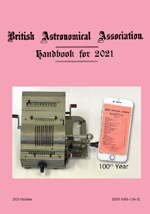Date/time intervals
Notes
This form is for predicting anything periodic. The idea came from the Variable Star Section (VSS) for whom the "starting event" would be a previously observed minimum or maximum and the "date/time period" would be the period between minima or maxima.
The starting event may either be entered as a Julian Date, the field for which is pre-filled when the form was displayed to make it easier to modify, or as a Gregorian calendar date and time in which case you must clear the JD field so it will be ignored. If you use the calendar fields whole numbers are required in the year and month fields (January = 1, etc). Fields after that may contain any combination of whole numbers or decimals and they will all be added together (eg, you could be awkward and put 1.5 days, 2.5 hours and 30 minutes and that would be understood to mean 1 day and 15 hours). The idea is to be as flexible as possible.
Invalid values in any fields cause the field names to become red.
Regardless of how long ago the starting event was, perhaps many cycles before the present time, the output table will start with the first occurrence of the event after the present; the form is intended for prediction rather than for creating a theoretical historical record.
However if you enter, say, -3 in the last field (as from ... days after now), the "predictions" will start from 3 days ago.
Most of the columns of the output table are in the standard format that is used by the VSS. The final column is in standard XML (W3C schema, xs:datetime) format because that is likely to be most useful if you wish to process the data further. The table can easily be selected with a mouse and pasted into a text editor and it will be plain text, without any table tags.



